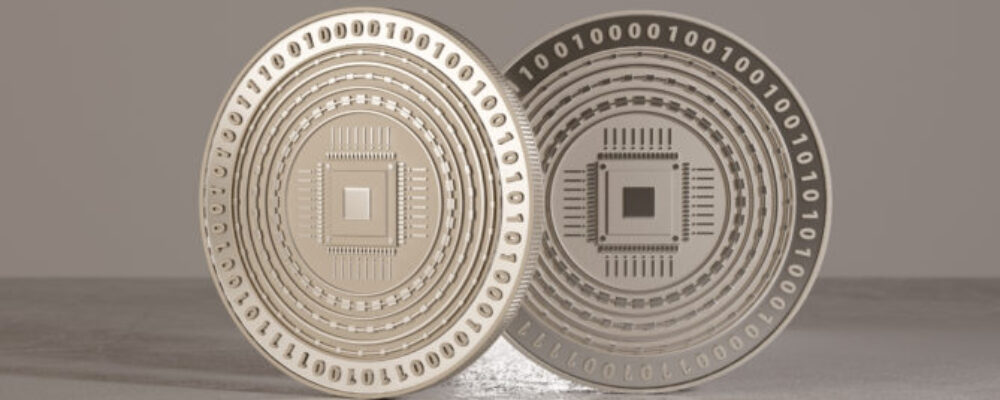Cyprus CEO summary:
On September 13, 2023, the US Securities and Exchange Commission (SEC) issued a cease-and-desist order against Stoner Cats 2, LLC (SC2) for allegedly conducting an unregistered securities offering through the sale of non-fungible tokens (NFTs) valued at $8.2 million. The NFTs were linked to a web-based animated series, and NFT holders received exclusive access to episodes and other benefits. The SEC considered these NFTs as investment contracts, subject to securities regulations, due to fundraising, marketing, managerial efforts, and buyer expectations of profit. SC2 settled with the SEC, agreeing to pay a $1 million civil monetary penalty and cease any further violations. Commissioners Hester Peirce and Mark Uyeda dissented, advocating for regulatory clarity in the NFT market instead of enforcement actions. This case underscores the SEC’s scrutiny of NFT offerings and the importance of assessing their economic substance.
In its second action involving NFTs, the SEC targets an offering tied to fundraising and promises of future value.
By Ghaith Mahmood, Nima H. Mohebbi, Stephen P. Wink, Douglas K. Yatter, Adam Zuckerman, Luca Marquard, and Deric Behar
On September 13, 2023, the Securities and Exchange Commission (SEC) issued a cease-and-desist order (the Order) against Stoner Cats 2, LLC (SC2) for an alleged unregistered securities offering relating to SC2’s sale of $8.2 million worth of non-fungible tokens (NFTs). The SEC alleged that the NFTs were issued to the public to finance the production of a web-based animated series by the same name.
SC2 agreed to a settlement that includes a civil monetary penalty of $1 million and ceasing and desisting from violating the Securities Act of 1933. SC2 neither admitted nor denied any wrongdoing as part of the settlement, which does not include any allegations of misleading or fraudulent statements.
The SEC obtained this settlement a few weeks after its first enforcement action against an NFT issuer (for more information, see this Latham post). This second action may signal a meaningful escalation in the area of NFTs.
Key Facts and Findings
The SEC alleged that on July 27, 2021, SC2 issued, offered, and sold 10,320 Stoner Cats NFTs to the public (in the US and abroad) for 3,647 ETH (then valued at approximately $8.2 million). The NFTs were minted to Ethereum and linked to unique images of characters in the animated series. Owning such an NFT granted owners a limited license to display the character tied to their NFT for personal, non-commercial uses only and in connection with sales of such NFT.[1]
In addition, NFT holders received exclusive access to episodes of the Stoner Cats show (as access to the show required linking a digital wallet that held at least one such NFT). The Stoner Cats terms also stated that “each Stoner Cats NFT may be used to unlock and access original digital content we provide, including episodes of an animated series.” Six such episodes (and a “Highliday Special”) were created.
NFT holders also received access to an online community of other NFT holders with opportunities to participate in events, contests, and interaction with creators, along with promises of the ability to vote on the creative direction that the Stoner Cats show would take. SC2 advertised a nominal limit of 20 NFTs per transaction, but investors were actually able to buy as many as they wished (even though only one NFT was needed to view the show and access special features).
The show was created by well-known writers and animators and starred recognizable voice actors. SC2 paid the creative, technical, and managerial staff all of the proceeds from the sale of NFTs, as well as all secondary market sales royalties (SC2 programmed the NFTs so that it received a 2.5% “royalty” on all secondary market transactions, a practice that is common for many similar NFTs).
The SEC alleged that SC2 engaged in “an extensive media campaign to promote the . . . NFTs both before and after they were sold to the public.” It also alleged that SC2 explicitly stated that “the more successful the show, the more successful your NFT” will be, and advertised the high price points of select secondary market sales of the NFTs.
According to the SEC, at least 20% of the NFTs purchased in the initial offering were resold in the secondary market before the first episode of the Stoner Cats show aired (two days after the offering), and a majority of the NFTs were resold in the secondary market before the release of the second episode on November 15, 2021.
Investment Contract Analysis
According to the SEC, SC2’s NFTs were offered and sold “as investment contracts, and therefore securities, pursuant to the test laid out in SEC v. W.J. Howey Co., 328 U.S. 293 (1946) and its progeny.” As with other investment contract cases, the SEC looks at the “the economic reality of the offering,” and considers factors such as capital raising, marketing, managerial and entrepreneurial efforts of the issuer, and buyer expectations of profits as indicia of securities transactions. The SEC’s order did not connect exactly what activities led it to consider these NFTs to be investment contracts, but it highlighted the following activities in its summary of the facts.
Fundraising
The Order highlighted the fundraising nature of the offering. SC2 stated, among other things, “that the proceeds of the offering would fund the production of the [show].” The SEC alleged that SC2 promised buyers that the offering would fund the company’s efforts to create the show, as well as the creation of a decentralized autonomous organization, and the production of at least one new animation project a year for three years. The SEC here viewed SC2’s offer and sale of NFTs as a capital-raising and platform-building activity, consistent with its view that such activities are indicia of securities offerings.
Marketing, Managerial Effort, and Expectation of Profit
As in the SEC’s first NFT enforcement action, the SEC in this case identified several marketing claims by the issuer and promises of future value for buyers that may have caused the overall arrangement to be an investment contract (similar to precedent cases such as Gary Plastic, though we note that the SEC did not reference Gary Plastic in this SC2 order).
The SEC highlighted that the Stoner Cats “show was largely incomplete at the time of the offering.” But, the SEC alleged, SC2’s media campaign “led investors to expect profits from [SC2’s] entrepreneurial and managerial efforts, because a successful web series could cause the resale value of the [NFTs] to rise in the secondary market.” The SEC alleged that NFT buyers were told that “the more successful the show, the more successful your NFT” will be.
As such, the SEC seems to be arguing that SC2’s public communications linking the success of the show to the value of the NFTs led investors to reasonably expect to profit from the managerial and entrepreneurial efforts of a centralized company.
Issuer Royalties and Buyer Expectation of Profit
The SEC argued that by programming the NFTs to yield royalties on secondary sales, and by promoting the NFTs after the NFTs traded exclusively on the secondary market, SC2 was incentivized to build value in the NFTs and encourage their trading on secondary markets.
The SEC seemed to argue that buyers could infer that because the show’s success and the issuer’s royalty stream were tied to the value of the NFTs, SC2’s management and creative team would make all efforts to increase the value of the NFTs. “The royalties also helped to assure owners of the NFTs that SC2 would remain committed to the animated show after receiving the […] offering proceeds. If the […] show was successful, the price of the NFTs could rise and so could the amount of royalties.” The SEC also highlighted several posts on SC2’s account on X (formerly known as Twitter) that “touted the sales of NFTs in the secondary market and encouraged the public to buy them.”
Remedies
SC2 agreed to settle without admitting or denying violation of (or exemption from) the registration provisions of the Securities Act of 1933. It agreed to pay a civil monetary penalty of $1 million (approximately 1/8 of the value of the ETH received at the time of the offering and about 1/6 of the value of the ETH today) to the SEC into a Fair Fund created pursuant to Section 308(a) of the Sarbanes-Oxley Act of 2002. It also agreed to cease and desist from committing or causing any violations and any future violations of Sections 5(a) and 5(c) of the Securities Act, and to destroy all implicated NFTs in its possession or control.
Dissent at the SEC
Commissioners Hester Peirce and Mark Uyeda issued a statement following the Order, noting that they dissented in this case (as they had in the previous NFT case). They once again called for the SEC to “lay out some clear guidelines” for the NFT market, rather than bringing enforcement actions against issuers and artists, and fostering a climate of “legal ambiguity.” Peirce and Uyeda compared SC2’s activity to crowdfunding[2] and the production to physical prints or pop culture collectibles.
They called on the SEC not to undermine the “ability of artists to sell their work, build a fan base, and involve that fan base in future creative endeavors.” They said they feared that the SEC’s approach, by pursuing enforcement rather than regulatory clarity, “discourages content creators from exploring ways to harness social networks to create and distribute content.”
Key Takeaways
This Order highlights that in addition to marketing and communications, the SEC will look at the economic substance of an NFT offering. In determining whether a particular NFT offering is a securities transaction, the SEC appears to put considerable emphasis on factors indicating if:
- issuers are conducting a fundraising;
- a broader project that the NFTs are tied to is incomplete at the time of the NFT sale; and
- buyers reasonably expect capital appreciation from the managerial and entrepreneurial efforts of the issuer or third parties.
While the marketing communications in the present case were not as overtly problematic as in the previous NFT case, the SEC argued they were sufficient to convey to buyers that the proceeds from the sale and resale of the NFTs would be used for platform and content building. Buyers allegedly understood that the fortunes of the issuer and the project were tied to their own, and the empirical evidence in the sales record suggests that the issuer facilitated and profited from an actively speculative market.
As articulated by the dissent, however, the SEC’s Order does not provide a clear guide on how sellers of other NFTs (or any other collectible) associated with broader media ventures such as movies, games, TV shows, and other media may avoid sales of such NFTs or collectibles being deemed investment contracts if the sellers choose to continue developing new media related to such NFTs and collectibles.
Latham & Watkins
Please visit the firm link to site





